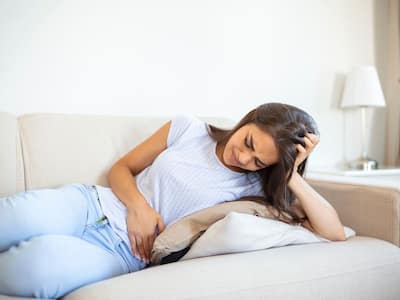
The uterine fibroids and endometriosis are common gynaecological health problems giving rise to drastic changes in the regular pattern of the menstrual calendar, flow, with or without pain.
The average period of bleeding can vary between 3 to 7 days. The usual range of period cycles can be between 21 to 35 days in a healthy woman. Menstruation periods occur due to the sex hormones and their interactions with other endocrine hormones such as Thyroid, Prolactin & Insulin. The fine-tuning between these hormones can also get affected by Body Mass Index, exercises, stress and ageing. Dr Vaishali Joshi, a senior Obstetrician & Gynaecologist at Kokilaben Ambani Hospital, Mumbai,further breaks down the flow cycle from the beginning of a woman’s life when the first period or Menarche happens, as hereunder:
The Transition Between Adolescence To Adulthood
The sex hormones regulating glands are controlled by Hypo-Thalamo-Pituitary Axis (HPA, Central mechanism in the brain). The maturity of HPA is achieved by 18-20 yrs, i.e. adulthood. From the menarche to this time, the period flow can be erratic, heavy, and prolonged. The menstrual cycles can be irregular and unpredictable. Every woman will have an average period with maturity, as described above. Weight gain can happen in this period due to unhealthy eating habits, lack of exercise due to abandonment of sports, concentrating on academics and stress of performance.
Periods Between 20s To 30s
This period is essential as sexual activity, childbearing, and women’s health-related problems can start. Using contraceptives, emergency pills, or injections such as Depo Provera can give rise to irregular periods or scanty period flow. Childbirth leads to significant weight gain post-pregnancy. Breastfeeding helps reduce weight, but lactational amenorrhea (not getting periods during breastfeeding) is common and can last 4-9 months. The period flow can decrease in quantity and days post-childbirth. Some women can develop pathologies like fibroids and endometrial polyps (skin tags in the womb lining). This can give heavy period flow or irregular spotting in between periods. The painful heavy period flow can be due to endometriosis or adenomyosis, a common problem in this age group.
READ RELATED: Living With Purpose: Finding Meaning And Fulfilment In Life
Changes In Period Flow During The 30s To 40s
Women gain in this age group which can be the main reason for changes in the flow. The estrogen hormone is released from the fat tissue, which becomes excess and causes hormonal imbalance. This can trigger Polycystic Ovarian Syndrome (PCOS) and overgrowth (hyperplasia) of the womb’s lining. The scanty period flow with skipping of periods are symptoms of PCOS. The heavy period flow can occur in hyperplasia of the uterus. The uterine fibroids, water bubbles on the ovaries ( ovarian cysts), and endometriosis are common gynaecological health problems in this age, giving rise to drastic changes in the regular pattern of the menstrual calendar, flow, with or without pain.
Changes In Periods Between The 40s-50s
The ovarian function starts declining. It’s normal to skip one or two periods in a year; the period flow can decrease significantly and last 2-3 days. Perimenopause starts around 45yrs of age. The period can become un- predictable, heavy and prolonged. This can continue till menopause. The average age of menopause is 50-51 yrs when periods stop entirely for a year.
Periods After The 50s
Very few women, about 15-20%, continue to have period flow after 50. They have symptoms of menopause with irregular periods and scanty periods. Women’s age, lifestyle, and mental health define their periods. One needs to embrace natural changes with grace. At the same time, one needs to be proactive and address period changes by seeking early medical advice.
Total Wellness is now just a click away.
Follow us on
window.addEventListener(‘load’, (event) => {
// $(document).ready(function(){
$(‘#commentbtn’).on(“click”,function(){
(function(d, s, id) { var js, fjs = d.getElementsByTagName(s)[0]; if (d.getElementById(id)) return; js = d.createElement(s); js.id = id; js.src = “//connect.facebook.net/en_US/sdk.js#xfbml=1&version=v2.3”; fjs.parentNode.insertBefore(js, fjs);}(document, ‘script’, ‘facebook-jssdk’));
$(“.cmntbox”).toggle();
});
// });
});








